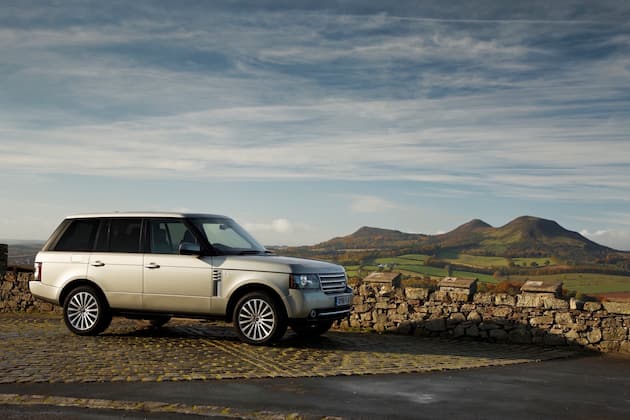At the Queen’s funeral a few weeks ago, Range Rover made its grand entrance again. Since the early 1970s, the Range Rover models have belonged to the elite and rustic fleet of the British royal family. But not only the royal family and the British government regularly use the Range Rover for private and official occasions – with and without armoring – but also in the posh areas of Beverly Hills, Dubai or Grünwald the Range Rover is part of the everyday street scene.
What quickly costs 100,000 or 150,000 euros as a new car is now a comparatively cheap alternative to moving such a luxury model as a used car, because the Range Rover’s depreciation in value is impressive. In particular, the third generation (internal code L322) developed under BMW leadership at the time marked a significant leap forward in terms of quality, workmanship, comfort and technology. The model generation presented in 2002 was technically in a completely different league than the previous series in the combination of a self-supporting body with independent wheel suspension and air suspension; was able to retain its classic charm and became a coveted luxury model.
However, the excellent BMW base has been diluted over the years as Range Rover, with parent brand Land Rover, fell to Ford and its Premium Group following the sale of BMW. That was the reason why the engines and transmissions came from Jaguar or PSA from the end of 2004/2005 and the BMW modules were gradually replaced. Here the 177 hp six-cylinder diesel was clearly too weak for the luxury colossus from England. However, this did not detract from the basic quality of the luxury off-road vehicle, and the V8 diesel engine introduced by PSA in 2006 was particularly popular in Europe. Technically, the 3.6-litre eight-cylinder common rail diesel is the big brother of the 2.7-litre V6 diesel that was installed in Jaguar, Land Rover and Peugeot models.
The final Range Rover models from 2010 are particularly popular, because there were slight retouches on the exterior design, a modified interior and significantly revised engines. The 3.6-liter common-rail diesel has been expanded to 4.4 liters and, instead of the previous 200 kW / 272 hp, now has a much more powerful 230 kW / 313 hp / 700 Nm, which has been brought to both drive axles in a more balanced manner by an eight-speed automatic transmission from ZF. The eight-cylinder diesel is the ideal choice for the luxury SUV from Great Britain, which weighs more than two tons.
Unfortunately, there will be no level five pollutant classification before mid-2010, which is why British diesels from some environmental regions now have to stay out. The models from the last three model years, 2011, 2012 and early 2013, are the best choice here, or you can opt for the powerful V8 petrol engines, because the eight-cylinder petrol engines don’t have the problem with entry controls. The eight-cylinder naturally aspirated engine became less important over the years, so that later the up to 375 kW / 510 hp supercharged engine from Jaguar provided impressive propulsion. However, it is considered to be particularly thirsty and those who are looking are well served with the normal five-liter V8 with 276 kW / 375 PS / 510 Nm, which was manufactured from 2009 to the end of production in 2012.
On the used car market, the demand for the third generation of the Range Rover is rather manageable. An exception are the models after the last facelift and thus from 2010. Most of the vehicles on the European market are eight-cylinder diesel. Even for the particularly elegant Autobiography Edition or the final Range Rover Westminster, it starts with a mileage of less than 150,000 kilometers for less than 25,000 euros. The equipment usually leaves nothing to be desired, because air-conditioned leather seats, DVD navigation, insulating glass, LED/xenon lights, auxiliary heating, sound system and air suspension are mandatory. So it is usually the condition, the service history and the color that make the difference.
The Range Rover does not have any major weaknesses apart from its stately petrol consumption. The diesel models carry the risk of a defective or clogged particle filter, which can quickly cost a few thousand euros after 150,000 kilometers. With increasing age, the plastics in the interior do not look valuable enough for a vehicle in the 150,000 euro league and the earlier model years sometimes have problems with electronics and instruments that fail.
The starter, alternator and the battery, which is not overly large, can also cause problems. The repairs are usually expensive and so you should not look at a cheap Range Rover, but at one with a complete maintenance history. The mileage itself then plays a rather subordinate role. Günther Nawrocki, for example, has now covered around one million kilometers in his Range Rover TD V8. The car from 2007 has been in his possession since 2012.
This article was written by Patrick Solberg
Every year, TÜV, DEKRA and GTÜ check the defect rate of used cars with new statistics. FOCUS Online evaluates all available reports for you. Here you will find the most recent overviews from 2016.
